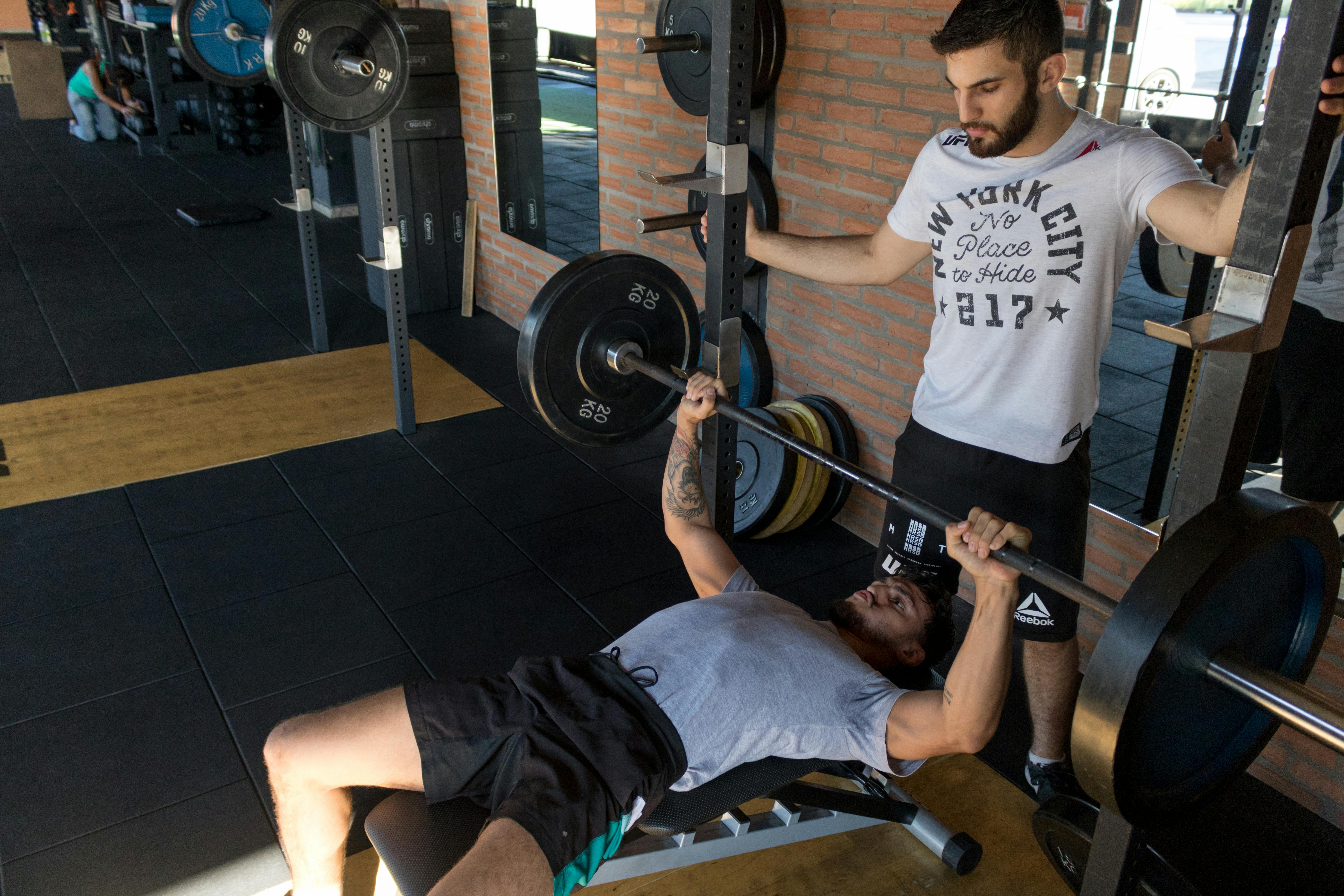Effective Ways to Master Schulterdrücken: Enhance Shoulder Muscles in 2025
Essential Techniques for Optimal Schulterdrücken Execution
Understanding Shoulder Anatomy and Function
To master the Schulterdrücken effectively, it is crucial to understand the relevant shoulder anatomy that facilitates movement. The primary muscles involved in the shoulder press are the deltoids, trapezius, and triceps. These muscles play a pivotal role in both strength building and maintaining shoulder health. By recognizing the anatomy at play, you can better appreciate how targeted exercises can lead to improved muscle hypertrophy and overall fitness performance.
Proper Body Positioning and Posture
Maintaining the right body posture during shoulder press exercises is fundamental for maximizing efficiency and reducing the risk of injury. Keep your back straight and feet shoulder-width apart. Ensure your arms are positioned correctly, holding the weights at shoulder level. A common mistake is to arch the back excessively, which increases the risk of shoulder injuries.
Optimizing Your Grip on Hanteln
Your grip on the weights affects the intensity of the workout. A narrow grip targets the medial deltoids, while a wider grip engages the front deltoids more. Experiment with various grip widths to determine which works best for you. The positioning of your wrists is also essential; ensure they are aligned with your forearms throughout the movement.
Incorporating Variation into Training Regimens
To prevent plateaus in your training, it’s vital to introduce variations in your shoulder press routines. Try different equipment like langhantel, resistance bands, or using one arm at a time for unilateral training. These variations enhance coordination, muscle engagement, and overall effectiveness of your workouts.
Warm-Up and Cooldown Routines
Prior to engaging in strenuous shoulder workouts, a proper warm-up is essential to enhance joint mobility and muscle readiness. Dynamic stretches focusing on the shoulders can help. Likewise, cooling down post-exercise facilitates recovery and reduces soreness. Employ static stretches targeting the shoulders and upper body to enhance recovery.
Building a Comprehensive Training Plan for Schulterdrücken
Creating a Structured Workout Schedule
Construct a well-structured training plan that includes consistent shoulder press workouts tailored to your fitness level. Incorporate weight lifting sessions 2-3 times per week, allowing for sufficient recovery. A balanced program is crucial for muscle growth and shoulder stability while also fostering injury prevention.
Setting Clear Fitness Goals
Establish clear short-term and long-term fitness goals. Determine what you aim to achieve, be it increasing your maximum weight lifted, enhancing endurance, or focusing on muscle hypertrophy. Setting specific, measurable goals can help you stay motivated and clear about your direction in strength training.
Monitoring Progress and Adjustments
Tracking your progress is essential for seeing results and maintaining motivation. Keep a fitness journal detailing your workouts, weights lifted, and body measurements. Adjust your workout intensity and volume based on performance feedback regularly. This approach fosters improvement and caters to individual progression.
Integrating Strength Training with Other Workout Types
While Schulterdrücken focuses on upper body strength, integrating other fitness modalities such as Ausdauertraining or core-strengthening exercises can bolster overall athletic performance and stability. A comprehensive fitness approach fortifies body strength and can overall enhance your workout experience.
Nutrition for Optimal Shoulder Performance
Proper nutrition underpins successful training. Consume protein-rich foods following your workouts to promote muscle recovery and growth. Consider pre-workout snacks for energy and hydration strategies to maintain optimal performance levels throughout your sessions. Understanding nutritional support can enhance your overall training effectiveness and results.
Common Mistakes to Avoid in Schulterdrücken
Cheating During Repetitions
Many lifters inadvertently cheat their way through reps, using momentum rather than muscle strength. This not only undermines the effectiveness of the exercise but significantly increases the likelihood of injury. Focus on controlled movements; slow down the repetitions to ensure full muscle engagement.
Neglecting Warm-Up and Mobility Work
A common error is skipping warm-up and mobility work prior to starting shoulder presses. Neglecting this critical step can lead to muscle strains and shoulder injuries. It is important to incorporate specific warm-up exercises targeting shoulder flexibility to enhance performance.
Ignoring Signs of Discomfort
A key principle of exercising safely is listening to your body. If you experience pain during shoulder presses, stop immediately and assess your technique. Pushing through pain can lead to serious shoulder injuries, diminishing your training efforts. Adjustments may be necessary to ensure shoulder health.
Underestimating the Role of Recovery
Recovery is a fundamental component of any training regimen. Overtraining can lead to fatigue and increased risk of injuries. Schedule regular rest days and consider active recovery sessions involving light mobility exercises or gentle yoga focused on shoulder health to promote healing and adaptation.
Forgetting About Balanced Training
Focusing solely on Schulterdrücken without incorporating exercises for opposing muscle groups can lead to imbalances and potential injury. Ensure that your training plan includes exercises targeting the posterior chain, such as rear deltoid flyes or lat pull-downs, to promote overall shoulder stability and strength.
Enhancing Shoulder Health Through Proper Techniques
Implementing Injury Prevention Strategies
Incorporating injury prevention strategies into your training is vital. This includes using correct form, varying your exercise routine, and integrating shoulder mobility work. Shoulder press exercises must be approached with caution, particularly if previous injuries exist. Employ physiotherapy strategies if necessary.
Understanding the Importance of Stabilization
Strong stabilization muscles are crucial for optimizing shoulder function. Focus on exercises that enhance the rotator cuff’s strength and stability, which are essential to perform shoulder presses effectively. Engaging in tailored exercises helps prevent injuries related to muscle weakness and engages the full potential of your training sessions.
Building Core Stability for Shoulder Support
A strong core supports all upper body movements, including Schulterdrücken. Core workouts such as planks, dead bugs, and various abdominal exercises can augment shoulder performance. Consistent core strengthening and stabilization provide a solid foundation for lifting heavy load safely and effectively.
Utilizing Breath Control During Lifts
Breathing techniques play a pivotal role in maintaining core stability and reducing the risk of injury during lifts. Focus on exhaling during the lifting phase of Schulterdrücken and inhaling as you lower the weights. Mastering breath control aids in maintaining a stable position and reduces strain on the shoulders.
Emphasizing Flexibility Training for Shoulders
Flexibility training is equally as important as strength training for shoulder health. Incorporating specific mobility workouts targeting shoulder range of motion enhances performance and reduces muscle tightness. Sufficient flexibility allows for safer, more efficient movement patterns during shoulder presses, steering clear of injuries.
Q&A: Common Concerns About Schulterdrücken
What is the best technique for Schulterdrücken?
The best technique involves keeping your back straight, feet shoulder-width apart, and ensuring your weights are positioned at shoulder height. Controlled movements are critical to avoiding injury and maximizing muscle engagement.
How often should I include Schulterdrücken in my workouts?
For most individuals, incorporating shoulder presses into a workout routine 2-3 times a week is effective. Be sure to allow adequate recovery between sessions to prevent overuse injuries.
Can Schulterdrücken lead to shoulder injuries?
Yes, improper technique and overtraining can lead to injuries. Ensuring proper form, warming up thoroughly, and incorporating recovery strategies are pivotal in avoiding shoulder injuries.
What are the benefits of training shoulder strength?
Training shoulder strength enhances your ability to perform activities of daily living, improves stability, increases upper body strength, and supports better posture, which is crucial for overall physical health.
Are there alternatives to shoulder presses for muscle building?
Yes, alternatives include lateral raises, upright rows, and resistance band exercises. Introducing a variety of exercises helps in targeting different muscle groups effectively and preventing training plateaus.


By following these effective techniques and strategies for mastering Schulterdrücken, you will significantly enhance your shoulder muscles in 2025. Each element of your training plan should be approached thoughtfully, ensuring you take the time to understand both the technical and practical sides of this essential upper-body exercise.
